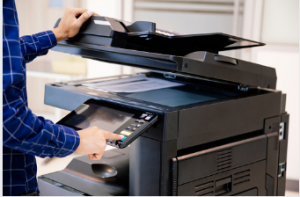A printer is a peripheral machine for making and storing a permanent representation of text or graphics. The output is usually human-readable, although expanded uses include bar code printers. This article covers all the basic types of printers, from the most common to the least common. It also compares different kinds of printers and what to look for when buying one. Of course, the best printer for your home or business depends on your budget and requirements.
Character printers
 Large character Ariel Print printers Adelaide are equipped with high-switching frequency nozzles and advanced electronics for precision printing. These printers are capable of printing on a variety of materials and surfaces. It allows them to enhance manufacturing efficiency and boost production output. They also feature the latest interfaces and are highly compatible with existing systems. Large character printers are also designed to print on curved, irregular, or flat surfaces. The advantages of large character printers are endless.
Large character Ariel Print printers Adelaide are equipped with high-switching frequency nozzles and advanced electronics for precision printing. These printers are capable of printing on a variety of materials and surfaces. It allows them to enhance manufacturing efficiency and boost production output. They also feature the latest interfaces and are highly compatible with existing systems. Large character printers are also designed to print on curved, irregular, or flat surfaces. The advantages of large character printers are endless.
Large character industrial packaging printers are an excellent cost-effective alternative to pre-printed boxes and labels. These printers can print readable text, logos, and graphics on porous substrates. In addition, many of these printers can be operated around the clock. Large character industrial packaging printers have numerous advantages, and some feature rugged printheads. For example, IJ4000 models are capable of printing on sloped conveyors. They also offer vertical printing capabilities.
Inkjet printers
Inkjet printers are one of the most popular printing devices available today. The ink they use is a liquid spray on paper to produce digital images. Inkjet printers are perfect for printing text-heavy documents and colour images, including school essays and business presentations. Several types of inkjet printers are available, ranging in price from inexpensive desktop units to more expensive all-in-one models.
Daisy-wheel printers
A Daisy-wheel printer functions like a typewriter, using a rotating element to print text, symbols, and numeric characters. A servo motor rotates the daisy wheel, which pauses for a character to be struck. During the printing process, the carriage moves to the centre of the platen, and the operator presses a button to change the wheel. As a result, a daisy-wheel printer requires less upkeep than a dot-matrix printer and is less expensive than a dot-matrix model.
Chain and band printers
There are many differences between band and chain Ariel Print printers Adelaide. The former uses a steel band to print characters in a band pattern, while the latter uses hammers to strike the paper. The hammers strike the paper as the drum rotates, leaving a printed impression. The band is replaced after one print so it can be used for different font styles. The chain and band printers are similar in many ways, but they differ in one crucial aspect: the printing character is shaped differently for each type of paper.
The difference between band and chain printers is the printing speed. Band and chain printers can print a line at a time. This printer has a high print speed of up to 6000 lines per minute, making it ideal for large print jobs. The speed of a chain printer is similar to a band printer, but the speed of the chain is faster. The speed of the band and chain printers is approximately 300-800 lines per minute.
Non-impact printers
Non-impact printers are very quiet and require very little maintenance, unlike impact printers. This type of printer is the most common type of printer. A non-impact printer uses no direct contact with the paper, so it is much quieter than an impact printer. The speed of non-impact printers is usually between 250 and 300 CPS, which is faster than an impact printer. Non-impact printers can produce colour printouts at around 40 to 300 CPS.
Paper support
If you want to print content from your computer, you need a printer with Paper Support. A support tray keeps the papers organised so the printer can print seamlessly without interruptions. The support tray is a removable component that can be moved up to a specific size, but you must ensure that it matches the printer’s paper size. Without it, you could have trouble printing even simple documents.